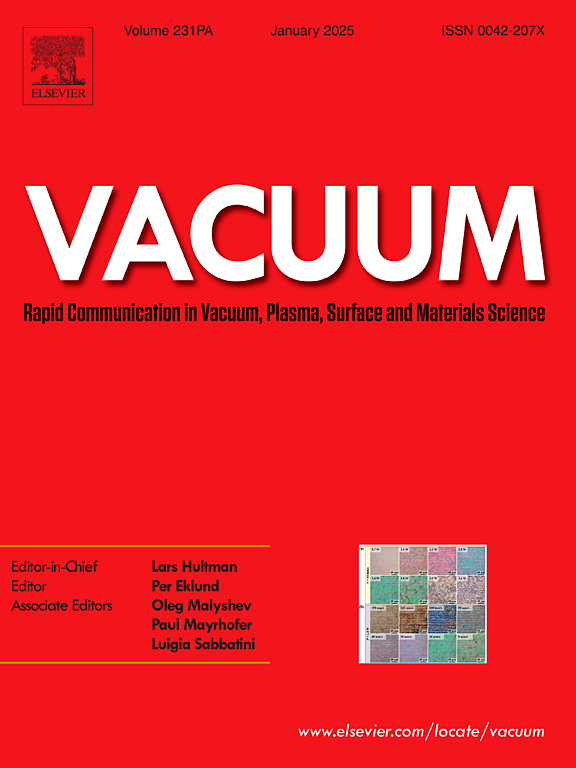Spangle formation on surface of Galvalume steel sheets: Study of microstructure control through cooling dynamics and titanium addition
IF 3.8
2区 材料科学
Q2 MATERIALS SCIENCE, MULTIDISCIPLINARY
引用次数: 0
Abstract
The spangle formation of Galvalume steel sheets under different cooling rates (5 °C/s and 15 °C/s) and titanium additions (0.1–0.5 wt%) are investigated. The SEM results show that the increased cooling rate can lead to the increase of the number of surface spangles and decrease of the spangle size. The XRD results show that the TiAl3 phases are located in the center of the spangle on surface of Galvalume steel sheet, indicating that the TiAl3 phases can act as a heterogeneous nucleus. The TEM analysis of spangle center is presented with Ti additions, The planar disregistries of TiAl3 phase and Al-rich phase are calculated. The planar disregistries are considered to be small enough in terms of lattice coherency except (100)TiAl3//(001)Al. It is possible for Al-rich phase growth from TiAl3 nuclei. Since the TiAl3 phase acts as heterogeneous nucleation sites, increasing the density of nucleation sizes, the spangles size decreases. With 0.5 wt% Ti additions under 15 °C/s, the spangles reach their minimum size. Besides, the oxygen and hydrogen content of Galvalume are explored and calculated. The EBSD results show that the Al-rich phase texture changes from <320> without Ti addition to <111> with 0.5 wt% Ti additions.
galvaluesteel薄板表面裂纹的形成:通过冷却动力学和添加钛控制微观结构的研究
研究了不同冷却速率(5°C/s和15°C/s)和钛添加量(0.1 ~ 0.5 wt%)下Galvalume钢板的带状变形。SEM结果表明,随着冷却速率的增大,表面裂纹数量增加,裂纹尺寸减小。XRD分析结果表明,TiAl3相位于Galvalume钢板表面晶面的中心,表明TiAl3相具有非均相核的作用。在钛元素的加入下,进行了斑心透射电镜分析,计算了TiAl3相和富al相的平面配准度。除了(100)TiAl3//(001)Al外,平面不配准在晶格相干性方面被认为足够小。TiAl3核有可能生长富al相。由于TiAl3相作为非均相成核位点,增大了成核尺寸的密度,带状晶斑尺寸减小。在15°C/s温度下,添加0.5 wt%的Ti,可以达到最小尺寸。此外,还对Galvalume的氧、氢含量进行了探索和计算。EBSD结果表明,从<;320>;不添加Ti的<;111>;添加0.5 wt%的Ti。
本文章由计算机程序翻译,如有差异,请以英文原文为准。
求助全文
约1分钟内获得全文
求助全文
来源期刊

Vacuum
工程技术-材料科学:综合
CiteScore
6.80
自引率
17.50%
发文量
0
审稿时长
34 days
期刊介绍:
Vacuum is an international rapid publications journal with a focus on short communication. All papers are peer-reviewed, with the review process for short communication geared towards very fast turnaround times. The journal also published full research papers, thematic issues and selected papers from leading conferences.
A report in Vacuum should represent a major advance in an area that involves a controlled environment at pressures of one atmosphere or below.
The scope of the journal includes:
1. Vacuum; original developments in vacuum pumping and instrumentation, vacuum measurement, vacuum gas dynamics, gas-surface interactions, surface treatment for UHV applications and low outgassing, vacuum melting, sintering, and vacuum metrology. Technology and solutions for large-scale facilities (e.g., particle accelerators and fusion devices). New instrumentation ( e.g., detectors and electron microscopes).
2. Plasma science; advances in PVD, CVD, plasma-assisted CVD, ion sources, deposition processes and analysis.
3. Surface science; surface engineering, surface chemistry, surface analysis, crystal growth, ion-surface interactions and etching, nanometer-scale processing, surface modification.
4. Materials science; novel functional or structural materials. Metals, ceramics, and polymers. Experiments, simulations, and modelling for understanding structure-property relationships. Thin films and coatings. Nanostructures and ion implantation.
 求助内容:
求助内容: 应助结果提醒方式:
应助结果提醒方式:


